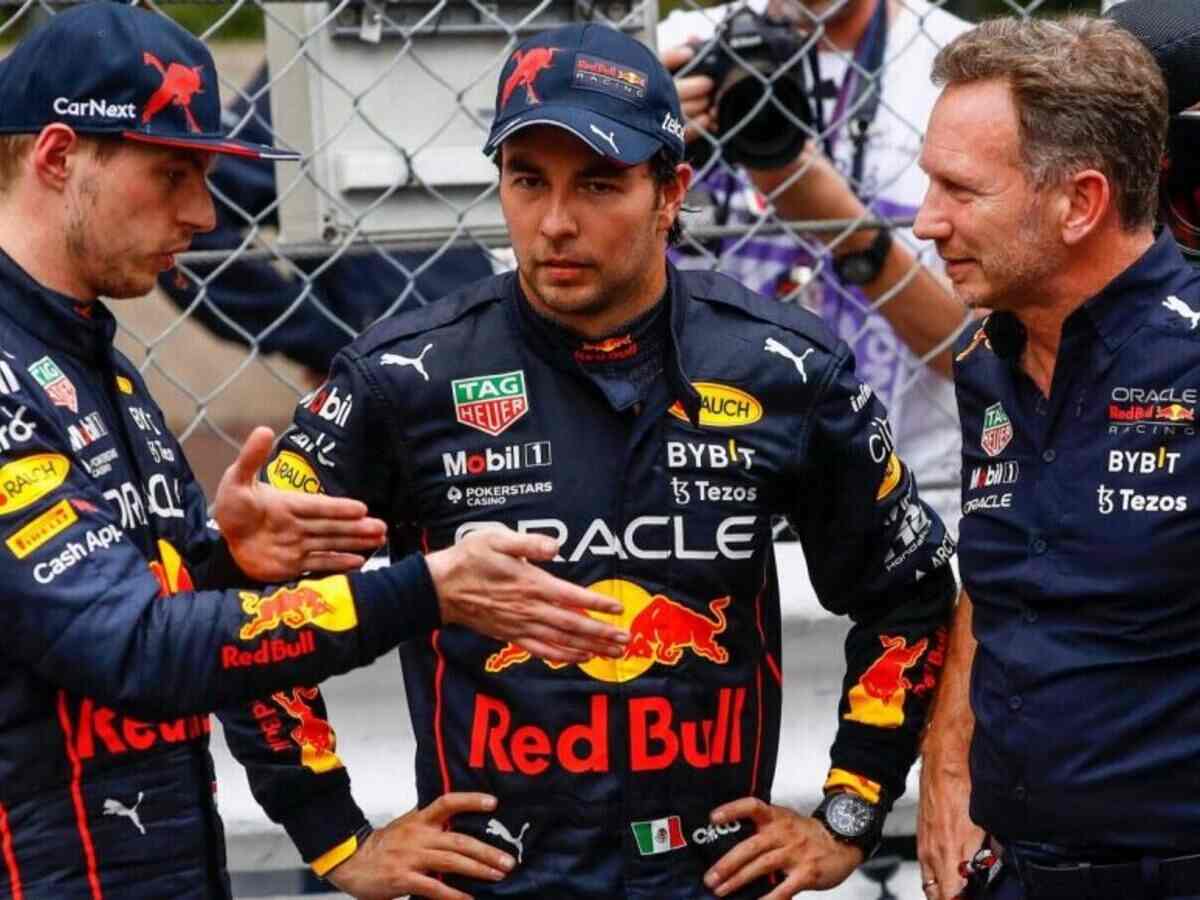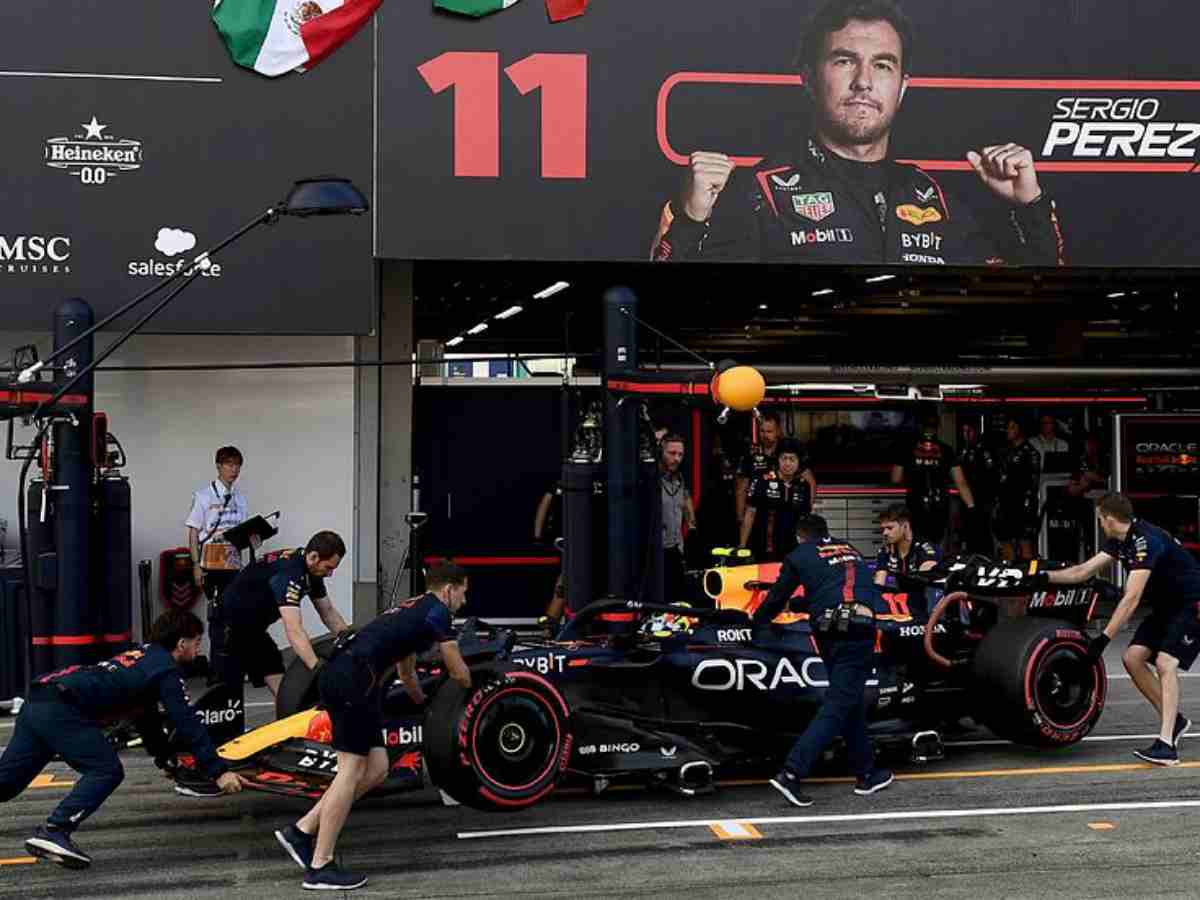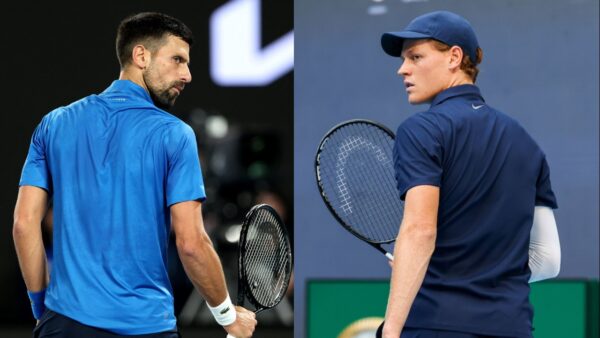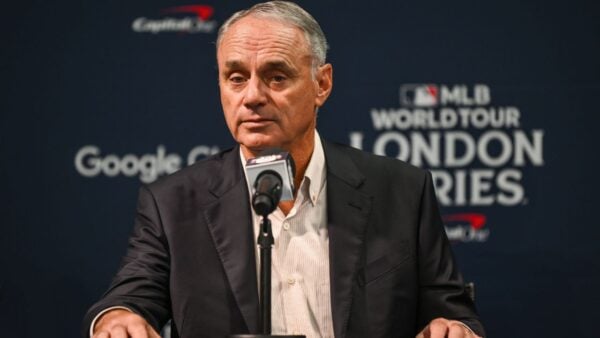A bizarre loophole allowed Sergio Perez to double DNF at the Japanese GP
Red Bull and Sergio Perez dodged a penalty for the next race by rejoining the track.

Max verstappen, Sergio Perez and Christian Horner (Via IMAGO)
🔍 Explore this post with:
While Max Verstappen took the chequered flag first, winning Red Bull’s sixth world title, his teammate, Sergio Perez, had a rather bizarre race. After initially retiring from the race following a collision with Kevin Magnussen’s Haas, Red Bull decided to respawn the Mexican halfway into the race, raising eyebrows at what happened. This led to the revelation of a bewildering loophole that conspired to thrust Perez into a double dose of DNF.
Perez was hunting down Kevin Magnussen, and in an attempt to pass the Haas, he lunged into the inside. The two cars clipped, sending Magnussen spinning. This collision caused damage, potentially to the front wing and suspension, severely affecting Perez’s racing capabilities. Following a review by race stewards, Perez was slapped with a five-second time penalty due to the incident.
While he initially attempted to soldier on, it soon became apparent that the damage was insurmountable. As a strategic move to avoid further setbacks, Perez called to retire from the race, a decision prompted by the severity of the injury and the understanding that serving the penalty wouldn’t significantly alter his race outcome.
However, the Red Bull team orchestrated an elaborate sequence in which Perez re-entered the race 26 laps later, completed an in-lap, pitted to serve the penalty, and then resumed racing to conclude the race ultimately. This meticulous execution allowed Red Bull to ensure that the penalty was served, preventing it from potentially becoming a grid-place penalty in the next race in Qatar. In this race, Max Verstappen could win his third title.
Discover: Max Verstappen finally ADMITS Red Bull have built a ‘rocketship’ of a car
Is rejoining post-retirement legal?
The maneuver, though perfectly legal, seemed too bizarre for the new watchers; a similar spectacle was seen a couple of years ago, with the latest example being Kimi Raikkonen at the Azerbaijan GP. However, the newest incident showcased the absurdity of the rulebook. This loophole turned attention from the racetrack to the technicalities of the rulebook, as reported by The Race.

Article 54.3 of the sporting regulations dictates the different penalties stewards have for drivers involved in incidents. These penalties consist of a five-second time penalty, where the driver must make a pit stop lasting at least five seconds, with the option to skip it if no further visits are planned, adding five seconds to their total time. Similarly, a ten-second time penalty follows the same process.
Alternatively, drivers may face a drive-through penalty, requiring them to enter and exit the pit lane promptly, or a ten-second stop-and-go penalty, necessitating a ten-second pit stop before rejoining the race, all enforceable during safety car procedures. According to the article, “If any of the four (4) penalties above are imposed upon a driver, and that driver is unable to serve the penalty due to retirement from the sprint session or the race, the stewards may impose a grid place penalty on the driver at his next race.”
Red Bull’s move wasn’t just about race points but cleverly dodging a grid penalty in Qatar. With the title secured, they aim for a one-two finish in the standings, making this a smart choice. There isn’t any other way to tackle the issue that out-right banning double retirement by a single team, which seems to be the path FIA heading following the high-profile incident.
In case you missed it:
- Oscar Piastri overjoyed to secure maiden F1 podium at the Japanese GP, says he will ‘remember it for a long time’
- Lando Norris proclaims McLaren is ‘coming for Red Bull’ following sensational double podium finish in Suzuka







